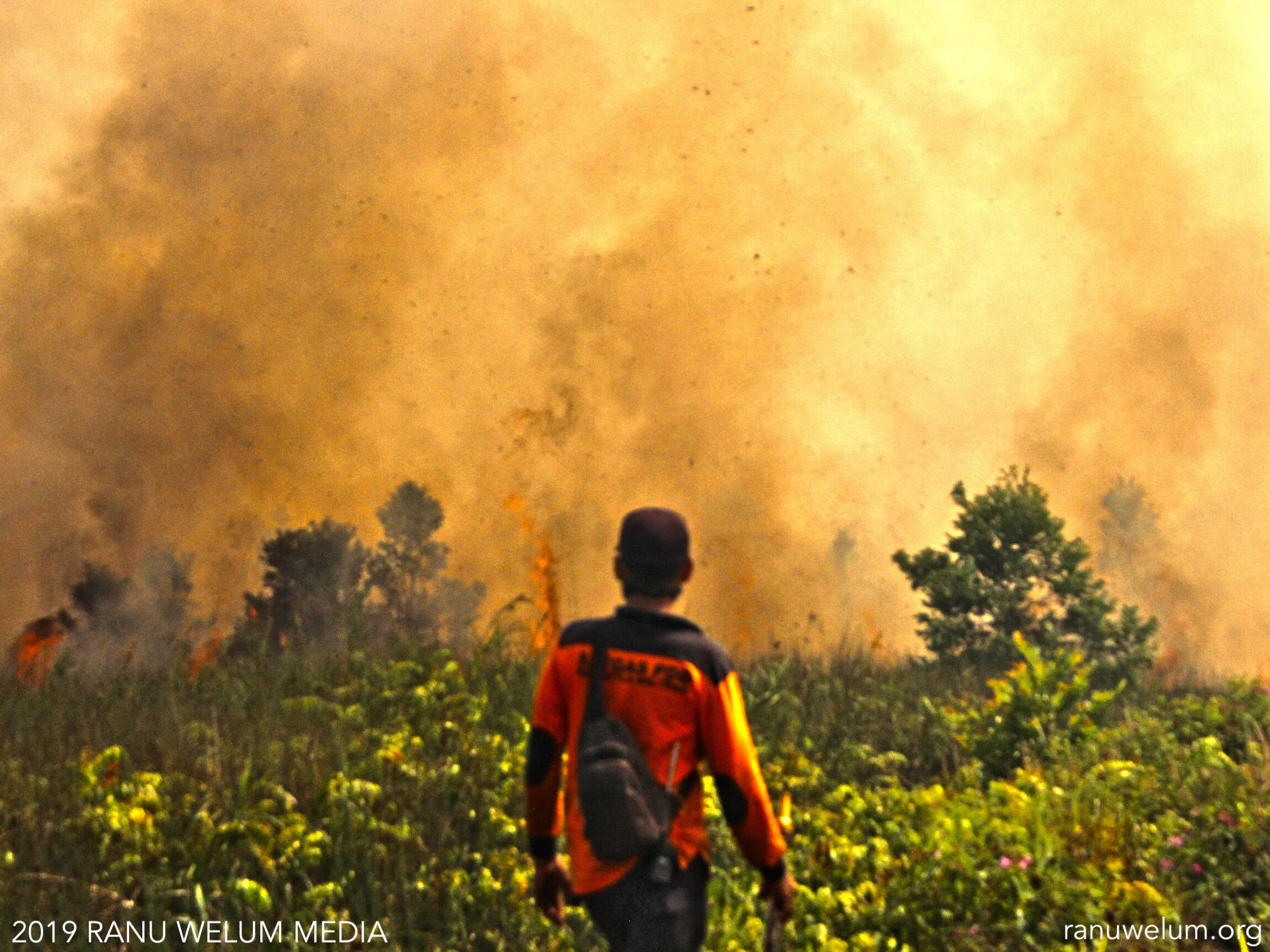Firefighter facing massive peat-land fire in Palangka Raya (22 October 2019)
06 January 2020
This article was written under smoke-stained tannin-yellow skies in Canberra and under dark blood-red skies in Merimbula. Despite not being under direct bushfire threat, these places experienced toxic haze for weeks. I had irritated eyes, headaches and nausea.
Fire
November 10, 2019: no rain fell on the Australian continent for the first known time; approximately 1,188 fires burned in Kalimantan; and over 140 simultaneous bushfires burnt Australia.
The 2019 fires in Indonesia and Australia (and everywhere else for that matter) are a global emergency: ancient rainforests that have been permanently wet for tens of millions of years and once considered fireproof are now tinderboxes; precious fauna have been burned to a crisp; and rare and ancient songbird populations have been decimated. In under four months Australia’s fires emitted an extra 250m tonnes of CO2 — half Australia’s total annual emissions; and in Indonesia over 73,000 fires have been burning since September, with some of the worst in Kalimantan. Indonesia’s disturbing 20-year pattern of now-annual rainforest and peatland fires and the toxic smoke and haze events symbolise the cultural, environmental and political futures of us all, because it’s not just the parallels between the 2019 Australian and Indonesian fires that are concerning, it’s the respective 20-year regimens of corruption, inaction and climate negligence, and the individual programs each government is using to silence those who speak out.

